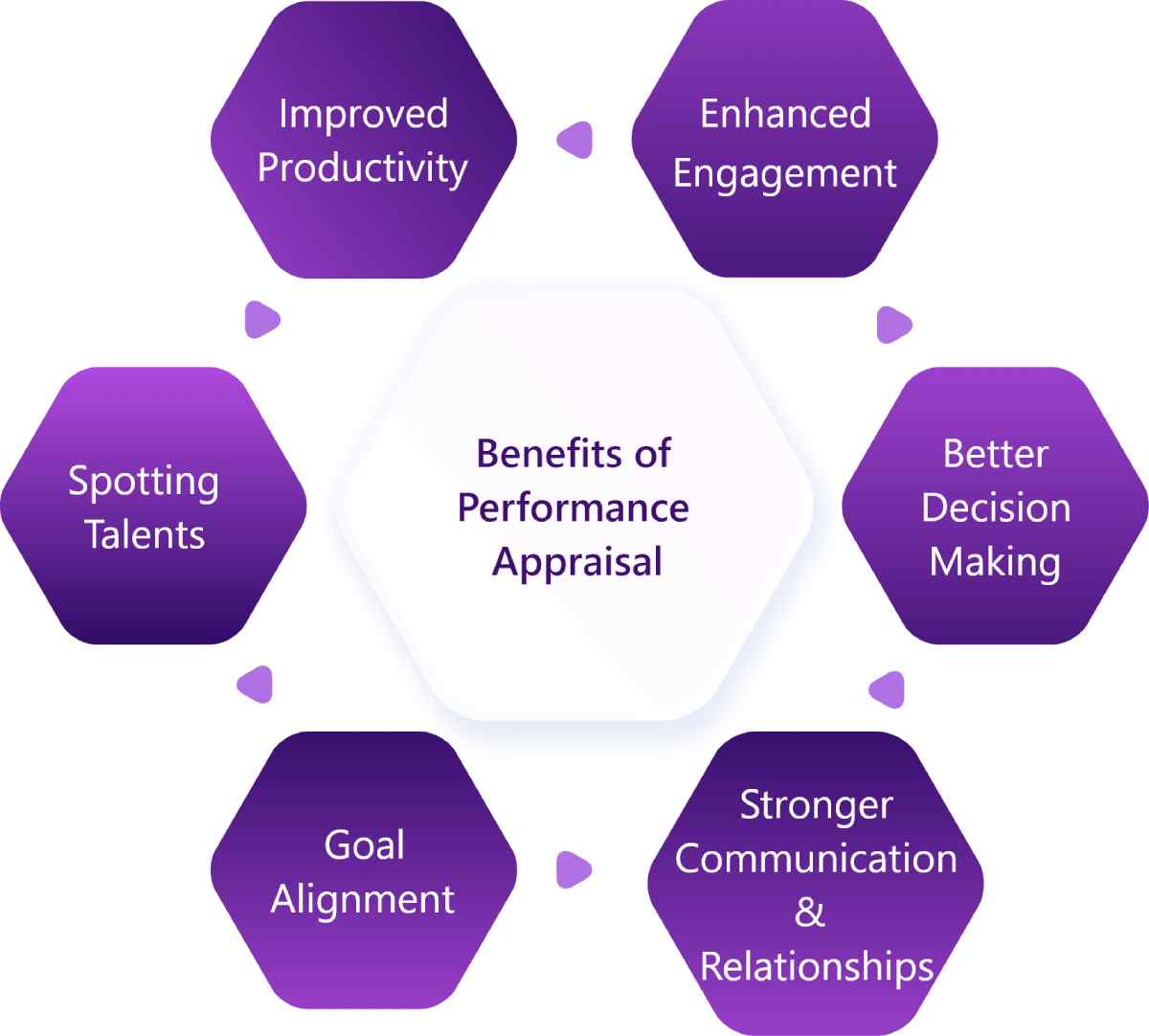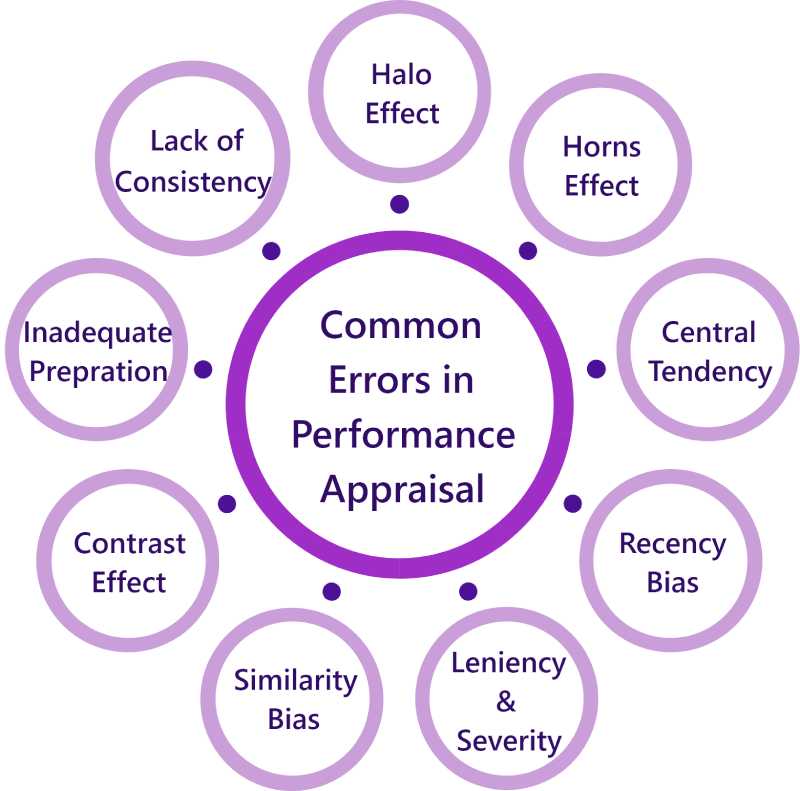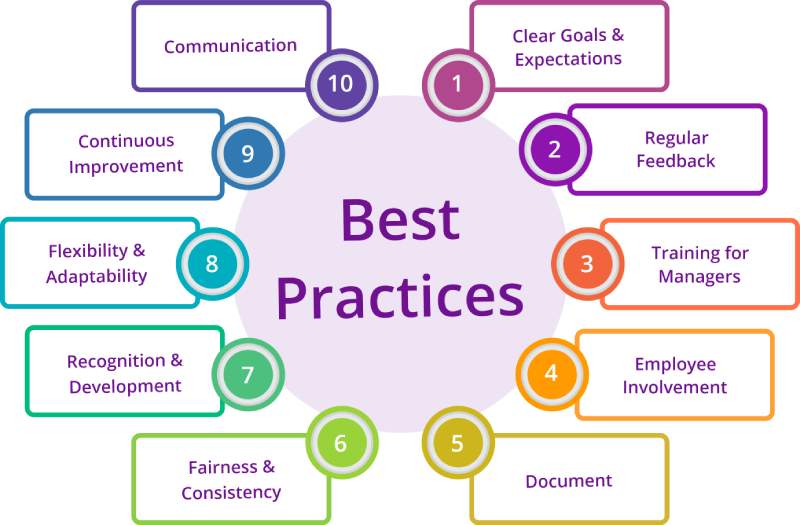How long do you think, your most productive and hardworking employee who does their job efficiently every time always before the deadline, keeps themselves updated on what’s going on in the office and the project will stay the same even when they are not getting any recognition or appreciation?
Will they keep dedicating themselves the same way without any recognition or appreciation? And for how long? One month, or maybe a few more months, they’ll start looking for a place that recognizes them for their hard work. This is a crucial stage where you must set up a fair and effective performance appraisal system to make your employees feel like they belong.
What is a Performance Appraisal System?
Now let’s reverse this situation. Your employees are hardworking and give their perfect share of effort in completing a major project. On top of that, the cherry on top is that they got recognized for their efforts and the sleepless nights they spent on that project.
You made a happy workforce who are motivated enough to achieve the goals of the company and the sense of fulfilment fosters loyalty encouraging your employees to stay longer with the organization.
A performance appraisal system is a process in which organizations can assess the performance of their workers. It entails evaluating their performance, offering feedback, establishing future targets, and designing developmental plans. This process assists the employees in identifying their strengths and areas of development hence assisting them in their career path. Also, it links personal and organizational objectives, increases motivation through rewards, and in the long run, improves organizational performance and employee satisfaction.
Importance of Performance Appraisal in Workplaces
According to a study by ResearchGate, organizations that engage in frequent performance appraisals see their employees’ engagement rise by roughly 20% and productivity by roughly 15% compared to organizations that do not conduct frequent performance appraisals making the employees feel valued and motivated towards work.
Performance appraisals are very important in assessing the efficiency of the employees, planning and facilitating organizational success.
- Enhancing Employee Performance: Employees need to know what is expected of them and appraisals give this information while also giving feedback on how to improve and acknowledging the good work that has been done.
- Facilitating Professional Development: Performance appraisals reveal training requirements and develop training and development plans that are consistent with the employee’s career goals, thus enhancing productivity and performance.
- Supporting Organizational Goals: Appraisals assist in the achievement of the goals and objectives of the organization and the individual to enhance the overall efficiency and performance indicators for decision-making.
- Identifying and Rewarding Top Performers: It is also important to appreciate your employee performance because it enhances loyalty and fairness in the organization, and it also assists in maintaining motivation and good working relationships.
- Improving Communication and Relationships: Appraisals encourage people to talk, solve problems and enhance cooperation and mutual respect in the workplace.
- Strategic Decision Making: They are used in decision-making for resource allocation, training, and legal compliance through documentation.
Benefits of Performance Appraisals to the Organization

It is necessary to employ performance appraisal programs in your workplace if you aim to achieve a motivated, productive and goal-oriented workforce.
Improved Productivity
To get a more competent and efficient team, you need to conduct frequent performance reviews, to understand their strengths and weaknesses. And drive your team towards excellence while guiding them with necessary training, and skill development.
Enhanced Engagement
Performance appraisals offer chances for the employees and their managers to establish goals and discuss career development. This two-way communication shows that the employer cares for the employees’ input and is willing to assist them in their growth, thus making them more active and satisfied.
Better Decision Making
Essential for making informed decisions about promotions, compensation, and staffing requirements, appraisal data identifies top performers who deserve rewards and employees who need additional training.
Stronger Communication and Relationships
The reviews provide an opportunity for the managers and the employees to interact hence improving the bonding, confidence and early identification of problems.
Goal Alignment
During the performance appraisal, the goals and expectations are laid down and aligned with the organizational goals and objectives, guaranteeing that everyone is in harmony.
Spot Talents
The appraisal process identifies potential talent within your organization that may have gone unnoticed. It helps uncover employees with leadership skills who can be trained to become future leaders.
It is evident that by implementing a good performance appraisal system, one has a lot to gain in terms of organizational performance and competitiveness. It is therefore important to note this.
Also Read: What is the Importance of Performance Monitoring & Best Tools
Did You Know?
Performance appraisals have been around for centuries. In ancient China, emperors used a form of performance evaluation to assess the efficiency of their officials. This early system was documented in the Wei Dynasty (220-265 AD).
What is the Process of Performance Appraisal?
Performance appraisal is also known as performance evaluation or performance review and is a systematic method of assessing employees’ performance in an organization. It is an important function of managing and developing employees, giving feedback, establishing goals and objectives, and making decisions concerning promotions, salary increases, and training.
Here’s a breakdown of the general process that is followed when conducting performance appraisals.
- Goal Setting: When starting a performance cycle, the employee and his or her manager agree on specific, quantifiable objectives that are relevant to the organization. These are the objectives that will be used to measure performance.
- Regular Feedback: During the performance period, managers give constant feedback to the employees on their performance, achievements, and weaknesses. This constant communication helps the employees to remain on track and make necessary changes to meet their objectives.
- Self-Assessment: Most performance appraisal systems include a self-appraisal feature where the employee can rate their performance against the set objectives and give their perspective on their performance and difficulties.
- Manager Evaluation: Managers assess the performance of their subordinates by observing them, the feedback they receive from other workers and customers, and the set objectives. They evaluate different areas of performance including knowledge of the job, work performance, communication, interpersonal relations, and compliance with organizational standards.
- Performance Review Meeting: The employee and manager formally sit to discuss the performance appraisal. In this meeting, the employee and the manager discuss the performance, strengths, weaknesses, and changes in goals or targets if any. It is also a chance to talk about professional growth and solve problems or issues.
- Performance Rating: The managers then rate the performance of each employee with the set evaluation criteria within the organization ratings could be in the form of numbers (for instance, a 1-5 scale) or in the form of labels (for instance, exceeds expectation, meets expectation, or requires improvement).
- Development Planning: After the performance rating, the managers and employees work together to create a team performance development plan that would help the employees close any gaps or work on any areas that were pointed out during the performance review. This may include more education, coaching, or chances to advance in one’s career.
- Reward and Recognition: Based on the organization’s policies and the outcome of the performance appraisal, the employees may be rewarded with a raise in their salary, bonus, promotion, or any other form of recognition for their excellent performance.
- Documentation: The goals set, feedback given, evaluation outcomes and development plans should be recorded in the performance appraisal process. It is a record of performance history and helps in decision-making for the future of the employees and their career paths.
- Follow-up: Performance appraisal is a continuous process and not an event. Managers should check in with employees periodically to see how they are doing if they need any assistance, and if there are changes that need to be made to the goals or expectations.
Thus, by following these steps, it is possible to assess the performance of the employees, and by fostering a culture of constant development, and contribute to the growth of the staff.
Common Errors in Performance Appraisals

Performance appraisals are crucial in determining the workforce productivity and any mistake in such a delicate process will result in demotivated employees, legal cases and low performance.
Put yourself in the shoes of the employee who is wrongly evaluated by the employer and is questioning their hard work. How does it feel wrong unfair right?
To prevent these mistakes in evaluations, remember these points and make sure that they are not committed.
1. Halo Effect
- Definition: The halo effect is a phenomenon where an appraiser’s general impression of an employee determines the assessment of other aspects of performance. For instance, if an employee has been performing well in one aspect, the appraiser may give the employee high scores in all aspects regardless of the true score.
- Impact: This can lead to an inaccurate assessment of the employee’s strengths and weaknesses, skewing the appraisal results.
- Solution: It is recommended to have specific and measurable objectives for each aspect of performance and to train the appraisers to avoid the halo effect.
2. Horns Effect
- Definition: The horns effect is the opposite of the halo effect. It occurs when an appraiser focuses on a single negative aspect or event and ignores the rest of the positive aspects of the employee’s performance.
- Impact: This can lead to low ratings that are not deserved and may even lead to employee demotivation.
- Solution: Promote fair assessment and the adoption of multiple measures of performance to give a holistic picture of the employee’s performance.
3. Central Tendency
- Definition: Central tendency is a situation where appraisers give all the employees average performance ratings, and do not give high or low ratings. This is often the case because there is no desire to distinguish between high and low performers.
- Impact: This makes it hard to determine who is performing well and who is not, hence poor appraisals are conducted.
- Solution: Use a forced distribution method or rating scale that mandates differentiation, and ensures the employees understand how to make proper ratings.
4. Recency Bias
- Definition: Recency bias is a common appraisal technique where the appraiser relies on the employee’s performance in the last few weeks or months of the appraisal period.
- Impact: This can result in bias because the short-term performance, whether good or bad, plays a significant role in the rating.
- Solution: Document performance frequently and use the whole appraisal period to make your assessments about the employees. To avoid this type of bias, I would suggest you seek feedback throughout the year and not only at the end of the fiscal year.
5. Leniency and Severity Bias
- Definition: The leniency bias is a tendency where the appraisers give overly generous ratings while the severity bias is the opposite where the appraisers give overly harsh ratings.
- Impact: While leniency can lead to over-estimation of performance, severity can lead to demotivation and disengagement of the employees.
- Solution: Schedule calibration meetings that would enable the appraisers to discuss their experiences and agree on the rating scale. It is also necessary to educate the appraisers to avoid relying on their own opinions and to use only the facts.
6. Similarity Bias
- Definition: Similarity bias occurs when the appraisers tend to rate the employees who are like them in terms of background, interest or work style.
- Impact: This may result in bias and prejudice, which are not healthy for the efficiency and equity of the appraisal system.
- Solution: Encourage diversity and inclusion training so that the appraisers can identify their biases and how to overcome them. One way of making sure that the appraisals are fair is by using standard evaluation criteria for the employees.
7. Contrast Effect
- Definition: The contrast effect is a phenomenon whereby an employee’s performance is evaluated by other employees instead of against a benchmark.
- Impact: This can lead to unfair evaluations, especially if the comparison group has high or low achievers.
- Solution: Concentrate on the performance of the employee about the set standards and measures rather than comparing him or her with other employees.
8. Inadequate Preparation
- Definition: Lack of preparation occurs when the appraisers fail to take adequate time to go through the employee’s performance data and feedback before the appraisal session.
- Impact: This can lead to rather general and nonconstructive comments that are not useful for the employee’s development.
- Solution: Remind appraisers to study performance records, seek feedback from different sources, and document examples of performance.
9. Lack of Consistency
- Definition: Inconsistency is realized when different appraisers apply different standards and criteria in assessing the employees hence arriving at different and unfair appraisals.
- Impact: This weakens the credibility of the appraisal system and may lead to dissatisfaction among the employees.
- Solution: Ensure that the appraisal process is standardized through the use of standard criteria and procedures. It is recommended that appraisers undergo training frequently so that they can apply these standards in the right manner.
10. Poor Communication
- Definition: The following are the main aspects of poor communication: The appraised outcomes, feedback and expectations are not well communicated to the employee.
- Impact: This can result in confusion, vagueness regarding expectations, and failure to capitalize on the potential for development.
- Solution: Instruct appraisers on how to communicate with subordinates and stress the need for positive feedback. Promote active listening and participation during the appraisal meeting to enhance the flow of communication.
Use Time Champ to avoid all these errors. The top-rated employee monitoring and productivity tracking software in the market. Humans are bound to make mistakes but not software, achieve accurate and real-time report analysis with Time Champ and easily evaluate your employees.
Best Practices for Implementing Performance Appraisal Systems

Here are some of the recommendations for the effective implementation of performance appraisal systems.
- Clear Goals and Expectations: Before starting, it’s crucial to define clear goals and expectations for the performance appraisal system. Employees should understand what criteria will be used to evaluate their performance.
- Regular Feedback: Rather than waiting for an annual review, providing regular feedback throughout the year helps employees understand their progress and areas for improvement.
- Training for Managers: Managers should receive training on how to conduct fair and effective performance appraisals. This includes providing feedback constructively and avoiding biases.
- Employee Involvement: Employees should be involved in the appraisal process by setting goals and providing input on their performance. This increases accountability and engagement.
- Documentation: Keeping detailed records of performance discussions and outcomes is essential for transparency and accountability.
- Fairness and Consistency: Ensure the performance appraisal process is fair and consistent across all employees. This means using standardized criteria and applying them uniformly.
- Recognition and Development: Performance appraisals should focus on areas for improvement, recognize employees’ strengths, and provide development opportunities.
- Flexibility and Adaptability: The performance appraisal system should be flexible enough to adapt to changing business needs and employee roles.
- Continuous Improvement: Regularly review and evaluate the performance appraisal system to identify areas for improvement and make necessary adjustments.
- Communication: Clear communication is key throughout the performance appraisal process, from setting expectations to providing feedback and discussing outcomes.
By following these best practices, you can implement a performance appraisal system that effectively evaluates employee performance, fosters development, and contributes to overall organizational success.
How Often Should You Run Employee Performance Appraisals?
Usually, performance appraisals are done on an annual basis or even semi-annually depending on the organizational standards. However, if you want to conduct more frequent appraisals for new employees, then you can conduct them at the end of three, six, or nine months. This method is useful when feedback is needed most, for instance when a new employee has made a mistake and can correct it the next time.
It is also important to point out that while performance appraisals can be carried out frequently, it is also important not to overemphasize it in a way that will be stressful to the employees. Use these appraisals when needed to promote development without having to lower performance due to exhaustion.
Conclusion
In conclusion, a performance appraisal system is crucial in enhancing productivity by rewarding good performance, ensuring organizational objectives are met, and promoting change. It fosters communication, trust, and development, thus improving employees’ participation. Feedback is important in ensuring that employees know what is expected of them and what they should do to meet the set goals. Finally, a good appraisal system fosters a motivated and goal-directed workforce which is crucial in today’s competitive environment.
Give Time Champ a try today! Start your free trial now and see how it can improve your productivity.
Want to Achieve Accurate Performance Appraisals Every time?
Start your free trial now to discover how Time Champ can help you master performance appraisals
Sign up for FreeBook Demo






